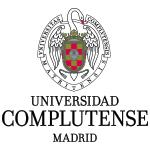Penetration of Listeria monocytogenes in mice infected by the oral route
Artículo de investigación publicado en Microbial Pathogenesis
1 de noviembre de 1997
In this study, it is suggested that the Peyer`s patches are the most important point of entry of Listeria monocytogenes in the host after subclinical infection by the oral route. Microbiological, histopathological and ultrastructural evidence of infection was obtained in mice inoculated with a sublethal dose of 10(9) cfu. No mortality was observed. L. monocytogenes was isolated from the mesenteric lymph nodes from 6 hours post infection (hpi) through day 7 p.i. and from the liver and spleen from 24 h p.i. until days 5 and 7 p.i. respectively. Lesions were mainly restricted to the dome area of Peyer`s patches and consisted of a purulent to pyogranulomatous inflammatory reaction. Scarce and minor lesions were also observed in the mesenteric lymph nodes and liver. L. monocytogenes was detected by immunohistochemistry in the Peyer`s patches from 12 h p. i. to day 6 p.i. Ultrastructural study of Peyer`s patches showed that the majority of Listeria cells were free within the cytoplasm of neutrophils and macrophages, not surrounded by a phagosomal membrane, and some of them were dividing. Copyright 1997 Academic Press Limited
Marco A., Altimira J., Prats N., Lopez S., Dominguez L., Domingo M. y Briones V..
 | Departamento de Sanidad Animal. Facultad de Veterinaria. Universidad Complutense (UCM). |
 | Servicio de Identificación y Caracterización Microbiana (ICM). Centro de Vigilancia Sanitaria Veterinaria (VISAVET). Universidad Complutense (UCM). |
| Departamento de Patología y Producciones Animales. Facultad de Veterinaria. Universitat Autònoma de Barcelona (UAB). | |
